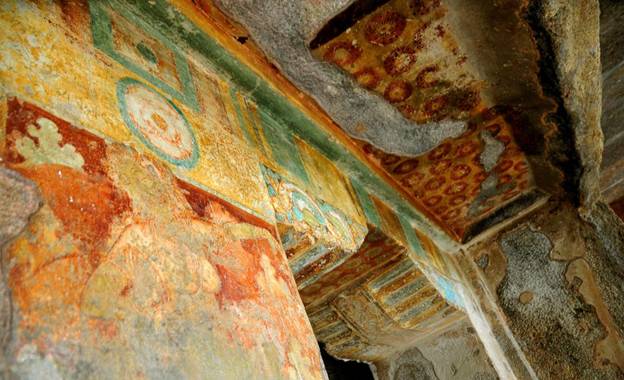Description

Copyright infringement not intended
Context: With much of the art in Sittanavasal either damaged or vandalised, Archaeological Survey of India has undertaken conservation measures and also introduced digital checks to track public access

Details:
- A small village in Pudukottai district of Tamil Nadu was a major centre of Jain influence for 1,000 years just before the Christian era.
- Sittanavasal is the name used synonymously for the hamlet and the hillock that houses the Arivar Kovil (temple of Arihats - Jains who conquered their senses), 'Ezhadipattam' (a cavern with 17 polished rock beds), megalithic burial sites and the Navachunai tarn (small mountain lake) with a submerged shrine.
- Sittanavasal is considered by historians to be one of the oldest inhabited areas in the district, and a major centre of Jain influence.
- This is the only place in Tamil Nadu where we can see Pandya paintings.
- Sittanavasal’s site and art was first mentioned by local historian S. Radhakrishnan Iyer in his 1916 book General History of Pudukottai State.
- The artwork on the ceiling of the sanctum and the ardha mandapam of Arivar Kovil is an early example of post-Ajanta cave paintings of the fourth to sixth centuries, done using the fresco-secco technique (a process that dispenses with preparation of the wall with wet plaster).
- The ceiling paintings show ‘bhavyas’ (exalted souls who work to achieve moksha or spiritual liberation) enjoying themselves in a pool, full of blooming lotuses; today much of it is obscured by patchy plastering.
- Faint outlines linger of dancing girls on the ‘ ardha mandapam’ pillars.
- The pillars of the verandah (added by the Maharaja of Pudukottai at the instance of then Diwan Alexander Tottenham in the 1900s), were brought from Kudumiyanmalai.
- The colours are a mixture of plant dyes and mineral elements such as lime, lamp black, and clay pigments such as ochre for yellow and terre verte for the greyish-green tints.
- Even though Sittanavasal is a comparatively small archaeological microcosm of Jainism in contrast to those found in Madurai and the Arcot districts, it is thought to be the best preserved example of a Jain cave temple in Tamil Nadu.
- Of the 20 cave temples in Pudukottai district, 19 belong to Saivite and Vaishnavite streams of Hinduism; Sittanavasal is the only Jain temple with sculptures.
https://www.thehindu.com/news/national/tamil-nadu/sittanavasals-jain-monuments-weathering-the-elements-and-public-apathy/article65931192.ece













